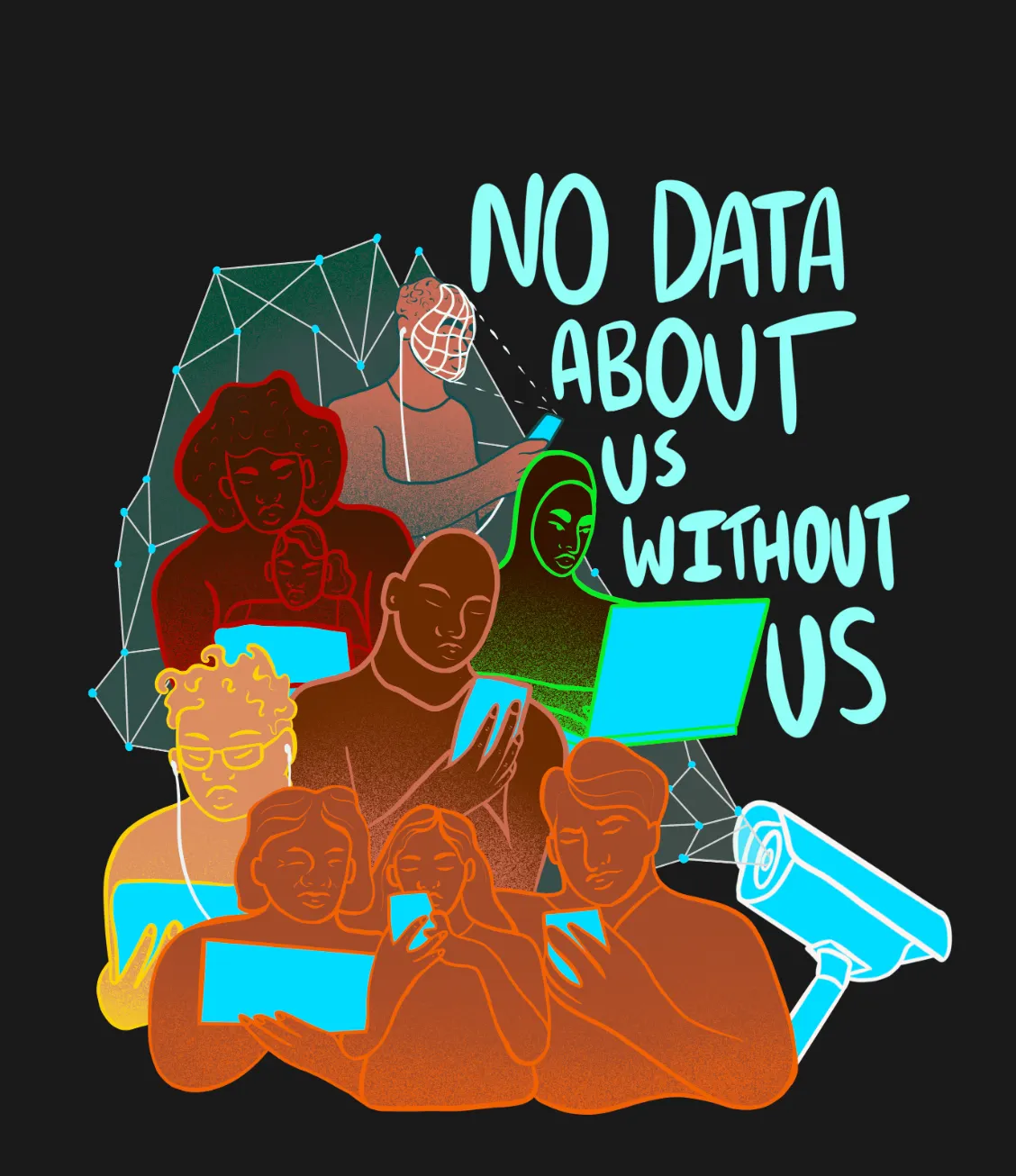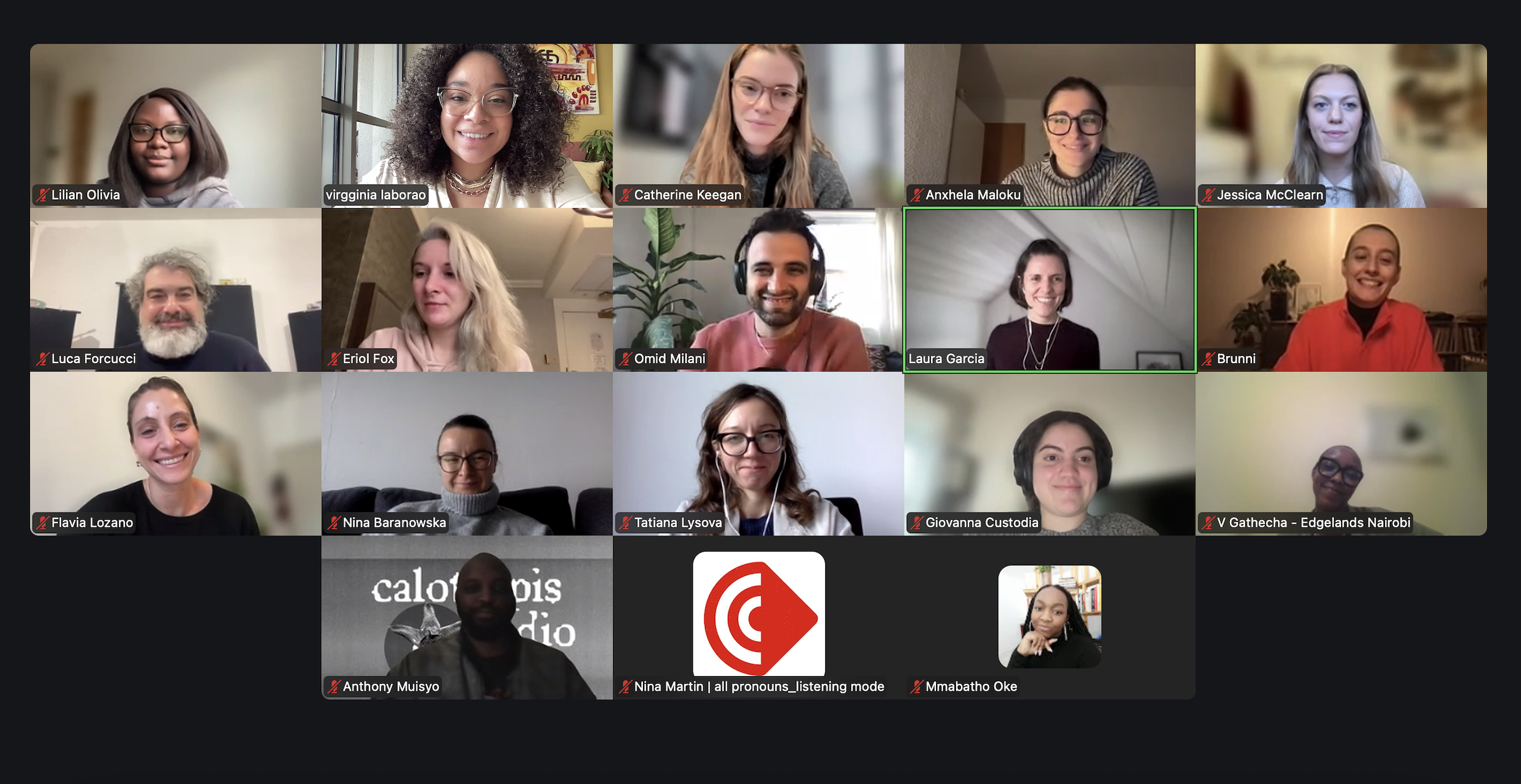Photographing the Invisible with the Magnum Agency
Bernard RappazLast month at the International Museum of the Red Cross in Geneva, the first two photographers involved in this adventure came to present their work. This discussion allowed us to discover two very different approaches but also to evoke the specificity of the medium of photography in research.

Photo: Laura Garcia. Panel at the event “Watching Me, Watching You” at the International Red Cross and Red Crescent Museum
Omnipresent, digital surveillance creeps into every corner of our daily lives. However, it is difficult to become aware of it. Apart from the cameras that now cover the urban space, the implementation of these technologies is difficult to perceive. Often virtual, these tools create an invisible and silent digital shadow around us. To shed light on this reality, Edgelands Institute uses academic research combined with community engagement, art, and the work of photographers from the renowned Magnum agency. In the various laboratory cities where Edgelands is conducting these observations, Magnum photographers come for a ten-day “residency” to cast their personal eye on the perception of digital security. They help create visual perspectives that provide new entry and discussion points to enrich the research. Each of these photographers brings a different way of looking and thinking about the subject. Photography thus becomes a revealer of a reality that is too often invisible.
Last month at the International Museum of the Red Cross in Geneva, the first two photographers involved in this adventure came to present their work: Peter van Atgmael, who covered Medellín in Colombia last spring, and Thomas Dworzak, who recently worked on Geneva. This discussion allowed us to discover two very different approaches, but also to evoke the specificity of the medium of photography in the research conducted by Edgelands. First of all, it was noted that documentary photography is an artistic process in its own right. As such, it reveals hidden aspects of our environment, in this case, the digital surveillance system. It brings to light the tensions between surveillance technology and privacy.
Using framing, composition, and image processing, the photographers create powerful images that show the challenges of digital surveillance. By playing with perspective, color, texture and contrast, they highlight the visual impact of these surveillance technologies on our urban environment. At the same time, photography is a tool for philosophical reflection on our relationship between technology and privacy. The photographers stimulate our attention to the ethical implications of digital surveillance and how it can threaten our privacy and freedoms. By photographing the tools of digital surveillance as well as the digital traces we leave, they challenge us to think about the limits of surveillance in a free and democratic society.
At the International Museum of the Red Cross event, Peter van Atgmael spoke about his work in Medellín, a city with a long history of drug-related violence. In this metropolis, not only the police, but also the cartels themselves have set up a very powerful surveillance system. But younger generations are also using these technologies to navigate urban space more safely by creating apps that help them monitor areas that are safer than others. So technology and surveillance work in many ways showing positive as well as negative aspects: police, cartels and young people use technology for their own purposes. Surveillance is a tool of control, but in the hands of Medellín’s youth, it allows for the emergence of a community and serves as a link between neighborhoods.

In his work, Peter has documented both formal and informal surveillance. Formal, because the network of security cameras, state and private, covers almost every inch of the city. In van Atgmael’s photographs, banks of screens line the city streets. The selection of where the cameras are located indicates a hierarchy of security that corresponds to the demographics of the city—screenshots of arrests, photographs of police patrols, and repeated camera images. Informal surveillance, on the other hand, is found in the neighborhoods run by gangs—children acting as lookouts for the various clans that rule the drug and black markets.

Noting these three circles of surveillance, Peter Van Atgmael, though accustomed to the war zones of Iraq and Afghanistan, says he has “never been to a place where he felt as constantly watched as in Medellín.” The different layers of surveillance, from technology, gangs, law enforcement and ordinary citizens, form an omnipresence of surveillance. Each of these private or public actors asserts, in a very interesting way, that these devices allow for better security. In the end, the photographs perfectly illustrate the questions raised by Edgelands: who is monitoring whom and according to what rules? Who manages these data and how are they used?

Quite another approach with Thomas Dworzak in Geneva. Less colorful, less exotic, the reality of Geneva does not make it easy to document the challenges of digital security/insecurity in this city where, apparently, cybercrime does not make the headlines and does not worry many people. Thomas chose precisely to set a “postcard” scene first. In a very literal way, he shows the city at the end of the lake as a haven of peace where nothing disturbs the apparent calm. All the clichés of the city are shown, from the past to the present, from the European cultural Mecca to today’s world city, the seat of the United Nations in Europe and of a multitude of international organizations.

In a second step, Thomas introduces the “digital footprint,” these digital shadows that are gradually transforming this postcard Geneva. By choosing to follow the daily life of several Genevans, he describes each of the digital traces of these citizens confronted with a digital surveillance at all moments. An unstoppable demonstration of the technological revolution that is creeping into all our actions, from the surveillance camera in public transport to the use of social networks, from computer interaction with our institutions to our purchases on the web.

Finally, with the help of Edgelands collaborators, Thomas searched the web for the storage locations of the digital data left here and there by the inhabitants of Geneva. First by calling the owners of the surveillance cameras (without much success!) and then by conducting an investigation on the web to identify with more or less certainty the storage of this data in the cloud and locate servers in Switzerland, Ireland, Germany or elsewhere. With screen captures, he ends his photographic project by showing industrial sheds where our digital data are now stored. As a final flourish, he had these hangars photographed and sent back as . . . postcards to the Genevans who participated in his survey on the “digital footprint”: see, he seems to say, where your digital double is stored!

Finally, Thomas Dworzak’s photographic investigation highlights in a spectacular way the discreet and silent implementation of the “surveillance society” in Geneva and, above all, the lack of transparency on the harvesting and storage of our digital data collected daily. These observations are essential to create a citizen debate on the stakes of the implementation of these technologies so crucial for our future.
As this gathering around Magnum’s early work has demonstrated, photography is clearly an artistic medium for raising public awareness about issues of digital surveillance and privacy. By documenting the effects of these technologies in our urban environment, these images help spark public debates about the ethics of digital surveillance and how we can use technology to improve our lives without sacrificing our privacy and freedom.



